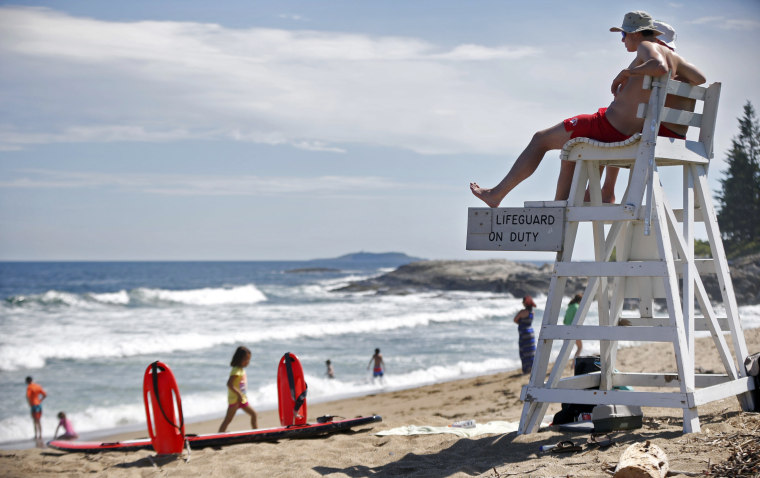It's summer and we're spending a lot of time in the pool, lakes and rivers. But all that water fun comes with risks; at least 3,536 people, many of them children, die from drowning each year. It's the fifth leading cause of accidental death.
Knowing how to react to a drowning can prevent a tragedy.
What does drowning look like?
“Drowning is a silent event. Typically, you don’t hear or see someone flailing in the water like it is portrayed on TV or in the movies,” Sue Mackie, the executive director of the U.S. Swim School Association (USSSA), told TODAY.
People are who drowning — whether an adult or child — are often too busy trying to breathe and trying to stay afloat to be able to call out for help.
Warning signs include:
- Mouth at water level and may alternate between being just above the surface and just below it
- Head tilted back as the person tries to float
- Eyes glassy or closed
Related: Drowning really is silent: What parents need to know

If you suspect someone is drowning, follow these USSSA guidelines:
- “Throw, Don’t Go”— Never just jump in because a drowning person can accidentally pull their rescuers under with them. Tossing a lifesaving device, rope, towel, or even pool noodle helps the drowning person without increasing risk to others.
- Get backup — Call 911 or inform others that someone is drowning, so they can call 911, and let them know you're helping. Alert lifeguards; they’re trained to assist.
- Help from behind — When drowning people see a rescuer coming toward them, they clutch and pull them under the water. Approaching them from behind is safer for both the rescuer and the victim.
- Use a life jacket — Wearing a Coast Guard-approved life jacket prevents a rescuer from being pulled under by a drowning person or an undercurrent. Life jackets are essential for rescues in water with currents, such as lakes, rivers, and oceans.
- Look for signs of secondary drowning — If drowning is prevented, the victim might still have water in his lungs and can suffocate hours later. Look for labored breathing, lethargy, and coughing hours afterward, which can indicate secondary drowning.
“Secondary drowning is very uncommon,” said Mackie. But it is still important for people to be aware that it can happen even after it seems an accident was avoided.
If in a lake or river ...
Wear a Coast Guard-approved life jacket that properly fits. Tether yourself to a boat or dock to prevent being carried away by the currents.
Related: Parents raise awareness of electric shock drowning
Have a designated watcher
Many times people drown because they swallow water or become tired and slip under the water. Having one person to keep watch over the group means that person notices if someone is suddenly missing.
“Be an active water watcher,” Mackie said. “If you are the person being the water watcher don’t be distracted.”
Related: What to know about dry drowning and how to prevent it
Learn to swim
While the guidelines help people save struggling swimmers, Mackie recommends that people try preventing the incidents. Learning how to swim remains one of the best ways to prevent drowning.
“If you introduce swim lessons to children ... they are going to learn, number one, to respect the water."